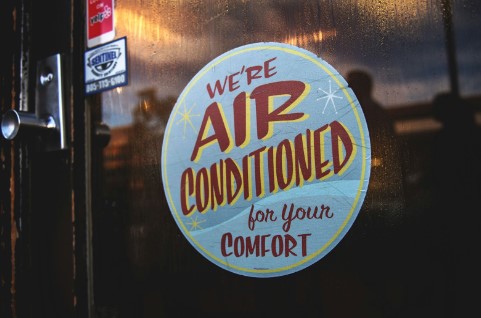Maintaining your HVAC will help it last you years to come. These systems can cost a pretty penny, so you don’t want to spend more to replace them entirely. Regular maintenance can even reduce operating costs for the HVAC, making it crucial for all homeowners.
Don’t know where to start? We put together this guide to help you. So, keep reading to learn more about maintaining your HVAC.
1. Change or Clean the Filters Often
One of the best things you can do to take care of your HVAC is to keep the filters as clean as possible. The system relies on these filters to manage dust and other particles. If they become clogged, the HVAC can’t run efficiently.
Dirty filters force the HVAC to run harder, costing you more money for less comfortable air. Instead, make sure you clean the filters every three months.
Here’s a quick breakdown of how you can clean your HVAC filters at home:
Power off the HVAC system.
Find and remove the filter. It’s usually located between the return duct and the air handler.
Inspect the filter closely. You can clean it if it’s covered in dust, but you’ll need to replace it if it’s damaged. If it’s broken, you can stop at this step and replace it with a new filter instead of cleaning your current one.
Use a hand vacuum or a vacuum with a brush hose to suck the dirt off the filter.
Rinse the filter in water and use a gentle detergent to clean it.
Let the filter dry completely. Putting it in too soon could introduce mold and mildew into the HVAC, which gets blown around your home.
Reinstall the filter from where you got it. You need to ensure it’s properly reconnected.
Turn the HVAC system back on.
It doesn’t take too long to clean an HVAC filter. Most of the time is spent waiting for it to dry, and you don’t need to do anything specific while you wait.
2. Don’t Skip Professional Inspections
Next, have a certified HVAC service expert inspect your system every year. The pros will ensure your system is running optimally. They can also find issues before they become more expensive to fix.
Most people don’t know what to look for in their HVACs, but the experts do. They’ll check the coils, refrigerants, and heat exchangers for issues. You can also describe any problems you’ve noticed to them and they’ll be able to determine what’s causing them.
If you haven’t had your HVAC inspected in years, now’s the perfect time to do so. The sooner the better when it comes to these systems. Preventive maintenance is essential for keeping your HVAC in top shape.
Overall, a trained expert can make a few small tweaks to your HVAC that potentially save you a lot of money over a year. It’s not something you want to skip on.
3. Check for Leaks in the Ducts
It’s also important that you check your HVAC every few months for leaks, especially if you notice your power bills gradually increasing each month. Start by turning on the system and touching the metal ducts where they meet.
You can tell there’s a leak if you feel a breeze coming through the gaps in the ducts. Take note of these areas by getting a picture of them or marking them with a grease pencil. Once you’ve found all the suspected leaks, place a strip of sealant tape over them.
This tape will help stop the leaks until you can have an expert make official repairs to the system.
Whatever you do, don’t use duct tape on your HVAC ducts. Despite the name, this tape won’t seal the gaps well. It also can’t withstand the heat changes on the metal ducts, so it comes off quickly. It can even break down due to these temperature fluctuations and get inside the HVAC when placed between the joints.
It’s usually easy to find leaks in an HVAC on your own, unless they’re in a part of the system you can’t see. You’ll want to have an expert evaluate the entire system if you suspect there are air leaks, but you can’t find them.
4. Pay Attention to the Thermostat
The thermostat is what you interact with to control your HVAC, so you need to ensure it works well. A malfunctioning thermostat can cause a lot of problems, making it more difficult to control your home’s temperature. Plus, it could cost you more on your energy bills because the system’s running so inefficiently.
Here are a few ways to tell that the thermostat isn’t running right:
The thermostat's display won’t turn on. Check that it has working batteries.
The cooling and heating systems won’t turn on. The thermostat is likely misreading your home’s temperature.
Conversely, they won’t come on.
The thermostat doesn’t match your home’s actual temperature. You can check it with multiple handheld thermostats.
The thermostat changes settings without your input. Nothing you set seems to stay for very long.
The HVAC comes on but turns off quickly. This process is called short cycling.
All of these could indicate that there’s something wrong with your HVAC thermometer. Its sensor could be malfunctioning or there could be a problem with the wires that let it communicate with the rest of the system.
You’ll want to have the experts take a look at it to determine the exact problem.
5. Add More Insulation Around the Home
Finally, you can install more insulation around your home. More insulation helps the HVAC run more efficiently, so it lasts longer. It doesn’t need to work harder to get the job of keeping your home comfortable done.
You can upgrade your windows or add more insulation to them with caulk. You can also add weather strips to your doors leading outside. Thick curtains are another good option.
Start Maintaining Your Home HVAC










